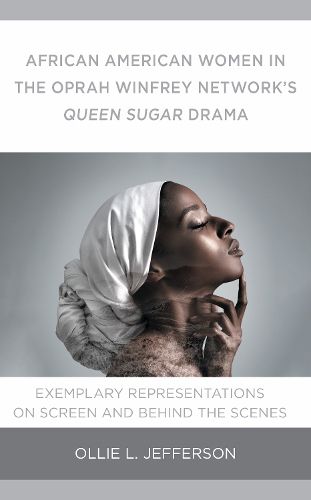Readings Newsletter
Become a Readings Member to make your shopping experience even easier.
Sign in or sign up for free!
You’re not far away from qualifying for FREE standard shipping within Australia
You’ve qualified for FREE standard shipping within Australia
The cart is loading…






Exemplary Representations of African American Women on Television: Queen Sugar On Screen and Behind the Scenes argues that the Oprah Winfrey Network’s program Queen Sugar is a significant contribution to mainstream media that creates a space for deeper conversations concerning Black/African American women’s social roles, social class, and social change. Ollie Jefferson provides a unique analysis of the television drama by using the exemplary representations conceptual framework, which is designed to define exemplars represented as characters that illustrate the complex humanity of Black lives-in this case, multidimensional female characters. Jefferson highlights the best practices used by female African American producers Oprah Winfrey and Ava DuVernay, using Queen Sugar as a case study that broadens understanding of the media industry’s need for culturally sensitive and conscious inclusion of people of color behind the scenes-as media owners, creators, writers, directors, and producers-to put an end to the persistent and pervasive misrepresentations of African American women on camera. Scholars of television studies, media studies, women’s studies, and race studies will find this book particularly useful.
$9.00 standard shipping within Australia
FREE standard shipping within Australia for orders over $100.00
Express & International shipping calculated at checkout
Exemplary Representations of African American Women on Television: Queen Sugar On Screen and Behind the Scenes argues that the Oprah Winfrey Network’s program Queen Sugar is a significant contribution to mainstream media that creates a space for deeper conversations concerning Black/African American women’s social roles, social class, and social change. Ollie Jefferson provides a unique analysis of the television drama by using the exemplary representations conceptual framework, which is designed to define exemplars represented as characters that illustrate the complex humanity of Black lives-in this case, multidimensional female characters. Jefferson highlights the best practices used by female African American producers Oprah Winfrey and Ava DuVernay, using Queen Sugar as a case study that broadens understanding of the media industry’s need for culturally sensitive and conscious inclusion of people of color behind the scenes-as media owners, creators, writers, directors, and producers-to put an end to the persistent and pervasive misrepresentations of African American women on camera. Scholars of television studies, media studies, women’s studies, and race studies will find this book particularly useful.